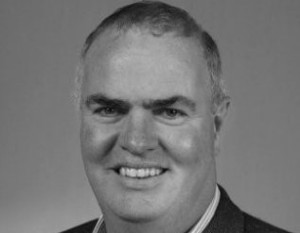
Kiwibank’s financial markets team says the answer will have big implications.
Inflation continues to moderate going from a peak of 7.3% to 4.7%.
But that’s not enough for the RBNZ to commence the cutting cycle. More progress is needed.
It’s not until the September quarter that Kiwibank expects inflation to dip below 3% and it’s not until mid-October that it sees that in writing. So that leaves the November meeting as the earliest date for cuts to begin.
Westpac says information flow has been light since the February monetary policy statement (MPS), hence it doesn’t think the RBNZ’s monetary policy stance will have changed much since then.
It expects no change in the OCR, when the RBNZ holds it rate meeting next week, with the decision to be accompanied by a relatively short statement that suggests little change in the OCR outlook.
Chief economist Kelly Eckhold expects the RBNZ will:
• Indicate a high level of comfort with the current 5.5% OCR.
• Note that recent economic developments have proceeded broadly as expected.
• Note the increased signs that global interest rates may be moving lower soon.
• But remain concerned about the current high level of inflation and the pace at which it will return to the mid-point of the 1-3% target range.
A more definitive view of the outlook should come in the May statement when the monetary policy committee (MPC) will have more information on the government’s fiscal stance and the first quarter CPI and labour market reports become available.
Both reports will be critical in determining if there is much need for the RBNZ to change its view that the OCR will remain unchanged until early/mid 2025, he says.
Who will be first?
Kiwibank’s financial markets team says arguably, the European Central Bank (ECB) and the Bank of England (BoE) have the strongest grounds to be the first to lower rates.
Inflation in the Euro area has fallen to 2.8%, from the 10.6% peak and is inching closer to the 2% target. In the UK, inflation is running at 3.4%. At the same time, economic activity has stagnated.
It’s a different story across the pond. US inflation has fallen from the 9.1% peak, but has been bouncing along the 3% mark since June last year.
The so-called final mile back to 2% is shaping up to be a long and bumpy one. All the while, the US economy and labour market are holding up well. Such resilience buys the US Federal Reserve time to lower interest rates.
Most in the market follow the Fed, and reflect back to their local central bank. And many central banks, the RBNZ included, will want the Fed to act as an icebreaker.
It’s more likely the Fed will cut mid-year followed by the ECB and BoE in quick succession, says Kiwibank.
The Aussies were late to the rate hiking party but could beat the RBNZ to rate cuts. While the RBNZ was among the first to start hiking rates, it’s likely they’ll be among the last to cut.
The timing of rate cuts is one thing, magnitude is another, Kiwbank says.
And it’s likely the RBNZ has more cuts up its sleeve compared to its peers. The RBNZ was aggressive on the way up (delivering 525bps of hikes), and it will be aggressive on the way down (potentially 300bps of cuts).
It’s conceivable the Kiwi cash rate will settle at a level below the policy rates of other central banks. The Fed’s latest dot plot projects a total of just 225bps of cuts to a median projection of 3% by 2026.





Comments
No comments yet.
Sign In to add your comment